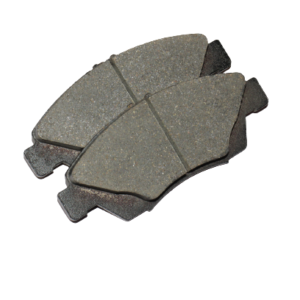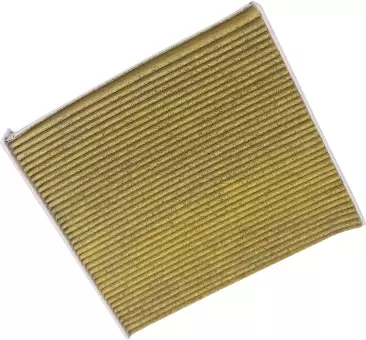Here’s a detailed blog post for the topic “How Monsoon Affects Auto Parts: Essential Maintenance Tips for Indian Car Owners.” The post provides insights into the challenges monsoon weather presents to vehicles and offers practical maintenance tips to help car owners protect their vehicles during this season.
How Monsoon Affects Auto Parts: Essential Maintenance Tips for Indian Car Owners
Monsoon season in India brings much-needed relief from the scorching summer heat, but it also introduces a unique set of challenges for car owners. The heavy rains, waterlogged roads, and high humidity can take a toll on your vehicle, especially its auto parts. Proper maintenance during the monsoon is essential to ensure your car remains in good condition and performs reliably. In this blog, we will explore how the monsoon affects auto parts and provide essential maintenance tips for Indian car owners.
1. Wipers and Windshield: Ensure Clear Visibility
How Monsoon Affects:
During the monsoon, visibility becomes a major concern due to heavy rains and foggy conditions. Worn-out wiper blades can leave streaks on the windshield, obstructing your view and making driving dangerous.
Maintenance Tips:
- Inspect Wiper Blades: Check the condition of your wiper blades regularly. If they are cracked, torn, or leave streaks on the windshield, it’s time to replace them. Opt for high-quality wiper blades designed for heavy rainfall.
- Keep the Windshield Clean: Regularly clean your windshield from both inside and outside. Use a good-quality glass cleaner to remove dirt, grime, and watermarks that can reduce visibility.
- Check Washer Fluid: Ensure that your windshield washer fluid is topped up and use a solution that helps remove dirt and bugs effectively.
2. Tires: Maintain Proper Grip on Wet Roads
How Monsoon Affects:
Wet and slippery roads during the monsoon can reduce tire traction, increasing the risk of skidding and accidents. Worn-out tires with low tread depth can make matters worse by failing to provide adequate grip.
Maintenance Tips:
- Check Tread Depth: Regularly inspect the tread depth of your tires. If the tread is worn down to 2mm or less, it’s time to replace the tires. Deep treads help channel water away from the tire’s surface, reducing the risk of hydroplaning.
- Monitor Tire Pressure: Ensure that your tires are properly inflated according to the manufacturer’s recommendations. Under-inflated tires can reduce traction, while over-inflated tires can lead to uneven wear.
- Rotate Tires: Consider rotating your tires to ensure even wear and prolong their lifespan, especially if you’ve noticed uneven tread wear.
3. Brakes: Ensure Responsive Stopping Power
How Monsoon Affects:
Brakes are one of the most critical safety components of your car, and their performance can be compromised during the monsoon. Waterlogged roads, mud, and moisture can affect brake pads and reduce their efficiency.
Maintenance Tips:
- Inspect Brake Pads and Discs: Regularly check the condition of your brake pads and discs. If you hear squeaking or grinding noises when applying the brakes, it may indicate worn-out pads that need replacement.
- Check for Rust: Monsoon moisture can cause rust to form on brake discs, leading to uneven braking. If you notice any rust, have your brakes inspected by a professional.
- Test Brake Response: Before driving in heavy rain, test your brakes to ensure they are responsive. If you notice any sponginess or a delay in braking, get them checked immediately.
4. Electrical System: Protect Against Moisture
How Monsoon Affects:
The electrical system of your car is vulnerable to moisture, which can cause short circuits, malfunctions, and even complete failure of critical components such as lights, sensors, and the battery.
Maintenance Tips:
- Inspect Battery Terminals: Ensure that your car’s battery terminals are clean and free from corrosion. Moisture can accelerate corrosion, leading to poor electrical connections and starting issues.
- Check for Loose Connections: Inspect the electrical connections in your car, including lights, sensors, and wiring. Ensure that all connections are tight and secure.
- Protect Electrical Components: Consider applying a protective spray or coating to exposed electrical components to prevent moisture from seeping in.
5. Undercarriage: Prevent Rust and Corrosion
How Monsoon Affects:
The undercarriage of your car is particularly susceptible to rust and corrosion during the monsoon due to constant exposure to water, mud, and debris on the roads.
Maintenance Tips:
- Regularly Wash the Undercarriage: After driving through waterlogged areas or muddy roads, thoroughly wash the undercarriage of your car to remove dirt, mud, and salt deposits that can accelerate rusting.
- Apply Anti-Rust Coating: Consider applying an anti-rust coating to the undercarriage before the monsoon season starts. This provides an extra layer of protection against corrosion.
- Inspect for Damage: Regularly inspect the undercarriage for signs of rust, dents, or damage. Address any issues promptly to prevent further deterioration.
6. Air Filter and AC System: Ensure Clean Airflow
How Monsoon Affects:
During the monsoon, the air filter and AC system of your car can get clogged with moisture, dirt, and debris, leading to reduced airflow and inefficient cooling.
Maintenance Tips:
- Replace the Air Filter: Check the condition of your car’s air filter and replace it if it appears dirty or clogged. A clean air filter ensures optimal engine performance and efficient AC operation.
- Clean the AC Vents: Moisture can accumulate in the AC vents, leading to mold growth and unpleasant odors. Regularly clean the vents and consider using an anti-bacterial spray to keep them fresh.
- Run the AC Regularly: Even if you’re not using the AC frequently during the monsoon, run it occasionally to prevent moisture buildup and ensure the system stays in good working order.

Conclusion
The monsoon season can be challenging for car owners in India, but with the right maintenance practices, you can protect your vehicle from the adverse effects of heavy rains and humidity. By paying attention to essential auto parts like wipers, tires, brakes, the electrical system, undercarriage, and air filters, you can ensure that your car remains reliable and safe throughout the rainy season.
Regular maintenance not only enhances the performance and longevity of your vehicle but also ensures your safety on the road. Make sure to schedule a thorough check-up with your mechanic before the monsoon sets in and follow these tips to keep your car in top condition. Remember, a well-maintained car is your best ally in navigating the challenges of the monsoon season.
This blog offers practical advice to help Indian car owners take care of their vehicles during the monsoon season, ensuring safety and reliability on the road.





